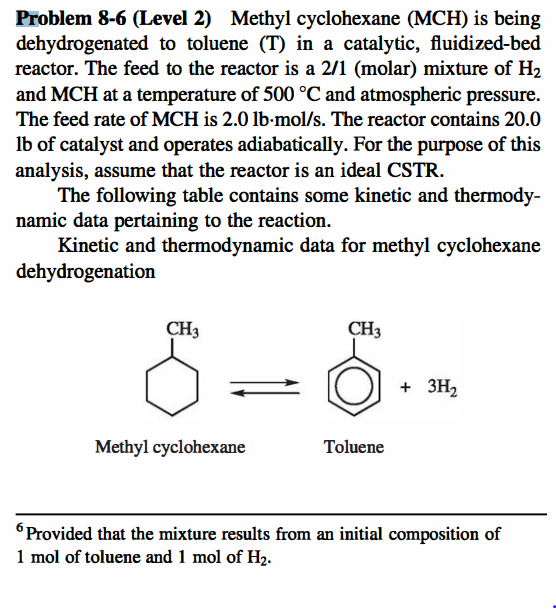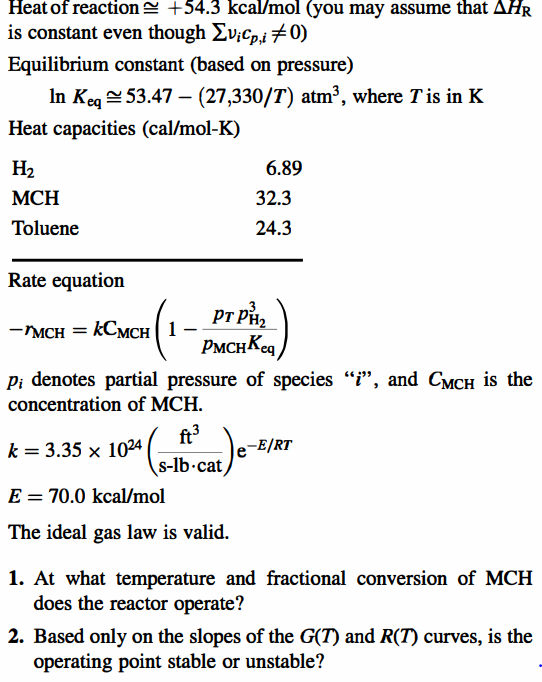Home /
Expert Answers /
Chemical Engineering /
problem-8-6-level-2-methyl-cyclohexane-mch-is-being-dehydrogenated-to-toluene-t-in-a-catalyt-pa280
(Solved): Problem 8-6 (Level 2) Methyl cyclohexane (MCH) is being dehydrogenated to toluene (T) in a catalyt ...
Problem 8-6 (Level 2) Methyl cyclohexane (MCH) is being dehydrogenated to toluene in a catalytic, fluidized-bed reactor. The feed to the reactor is a (molar) mixture of and at a temperature of and atmospheric pressure. The feed rate of is . The reactor contains 20.0 of catalyst and operates adiabatically. For the purpose of this analysis, assume that the reactor is an ideal CSTR. The following table contains some kinetic and thermodynamic data pertaining to the reaction. Kinetic and thermodynamic data for methyl cyclohexane dehydrogenation Methyl cyclohexane Toluene Provided that the mixture results from an initial composition of of toluene and of .
Heat of reaction (you may assume that is constant even though ) Equilibrium constant (based on pressure) , where is in Heat capacities (cal/mol-K) Rate equation denotes partial pressure of species " ", and is the concentration of . The ideal gas law is valid. 1. At what temperature and fractional conversion of does the reactor operate? 2. Based only on the slopes of the and curves, is the operating point stable or unstable?

